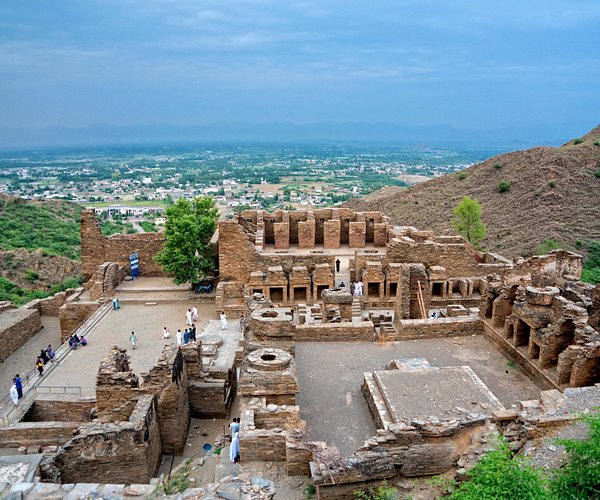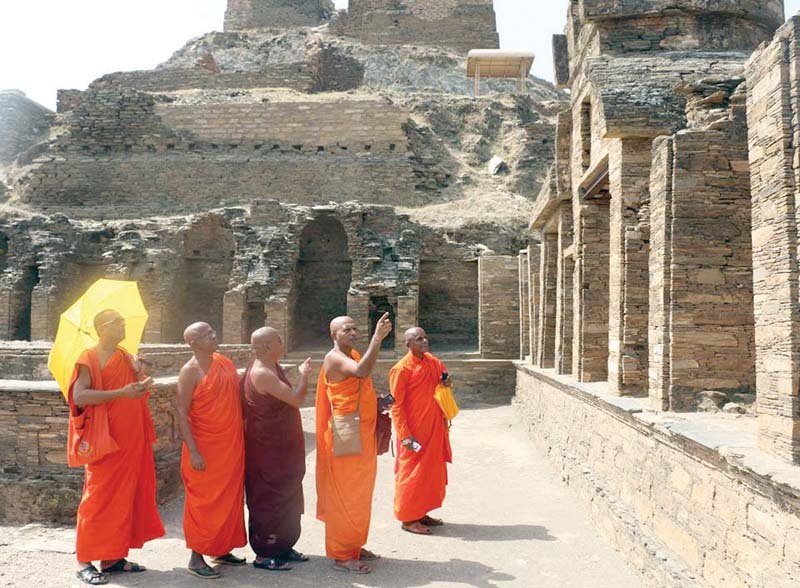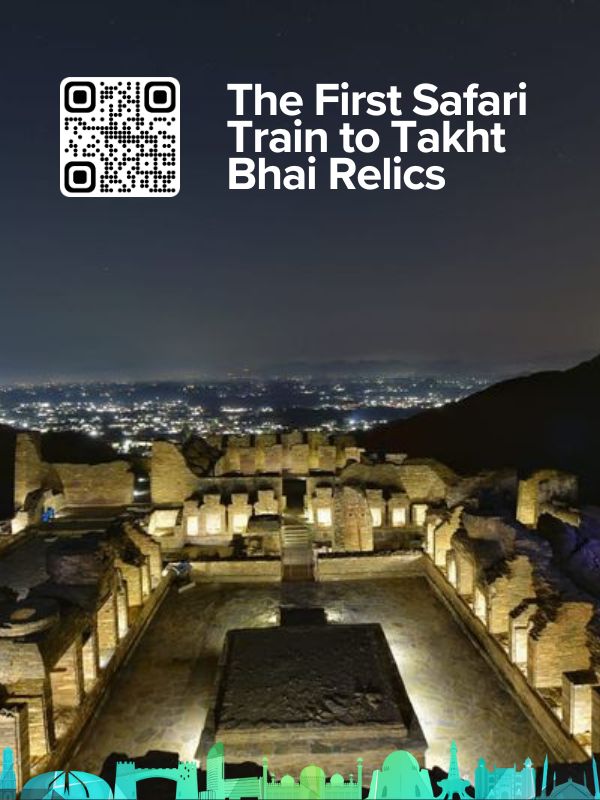Introduction
Story from Takht Bhai:
The echoes of the past resonate through the air as the Khyber Pakhtunkhwa Culture and Tourism Authority (KPCTA) inaugurates an extraordinary voyage back in time. History enthusiasts and curious travelers gathered on a crisp Sunday morning at Saddar Railway Station, embarking on the first-ever #safaritrain trip to the ancient Takht Bahi relics. This UNESCO-recognized world heritage site stands as a testament to the rich Buddha-era heritage, and the KPCTA’s initiative opens a new window to the past for the people of Pakistan.

The Safari Train Experience to Takht Bhai
As the sun broke through the dawn, 140 passengers assembled, anticipation buzzing among the crowd. The air was filled with the melodious tunes of a traditional Pipe band, offering a warm welcome that was nothing short of a grand celebration of KP’s vibrant culture. The nostalgic whistle of the train and the chug of the engine promised an adventure not just through space but also time.
Historical Insights of Takht Bhai
The Takht Bahi relics, perched on the high vistas of the Mardan district, are more than mere remnants of structures; they are the silent narrators of an era where Buddhism thrived in the Indian subcontinent. The passengers, now voyagers on a historical quest, were briefed on the significance of these sites. Guides and historians shared tales of KP’s illustrious past, its customs, and the folklore woven into the fabric of time.

The Route and Sightseeing
Departing from Saddar Cantt Railway Station at 9:00 AM, the train chugged along, halting at notable stations – each a chapter in the region’s story. From the City Railway Station to the pastoral views at Nasirpur, Pabbi, and finally Takht Bhai, the journey was an unfolding canvas of KP’s diverse landscapes. The vibrant fields, the hustle of city life, and the serene mountains in the backdrop created a mosaic of visual delight, enriching the experience further.
Impact on Tourism in Takht Bhai
This innovative endeavor is a cornerstone of KPCTA’s strategy to foster a holistic tourism industry by bringing tourists directly to Takht Bhai. By highlighting religious tourism through the Buddhist heritage and intertwining it with eco and agritourism, the safari train does more than transport people; it carries forward the vision of sustainable tourism development. Initiatives like this also catapult the local tourism industry into the spotlight, promising economic and cultural revival.

Conclusion
As the journey concluded, the passengers left with a newfound appreciation for their heritage. The Takht Bahi safari train is not just a mode of transportation; it’s a cultural chariot that promises to preserve and share KP’s legacy. This voyage marks the beginning of a series of endeavors by KPCTA to showcase the historical riches of Pakistan.
Call to Action
The KPCTA’s innovative approach beckons the young and old to rediscover the treasures of their homeland. If you, too, yearn to be part of this cultural renaissance, keep your eyes on the horizon for the next #safaritrain journey to Takht Bhai.

Management welcomes visitors and travelers with a traditional pipe band on March 3, 2024. — Facebook/Khyber Pakhtunkhwa Culture and Tourism Authority
Image Credits: The News
Share your stories, photos, and experiences; let’s embark on this journey together to unearth the stories waiting in Pakistan’s heart.
Research on Thakht Bhai Relics
Thakht Bhai, also known as Takht-i-Bahi, is an ancient Buddhist monastery located in Mardan, Khyber-Pakhtunkhwa, Pakistan. This archaeological site is considered one of the most imposing relics of Buddhism in the Gandhara region. Here are some key points about Thakht Bhai based on the provided search results:
- Historical Significance: Thakht Bhai dates back to the early 1st century AD and is listed as a UNESCO World Heritage Site due to its well-preserved structure and unique design.
- Architecture: The site showcases architectural complexity typical of Buddhist monastic complexes and serves as an excellent example of Gandharan Buddhist architecture.
- Components: Thakht Bhai consists of a main stupa court, votive stupa court, meditation cells, conference hall, covered stepped passageways and other secular buildings. It also includes the Neighbouring City Remains at Sahr-i-Bahlol, a small ancient fortified town from the Kushan period located nearby.
- Ownership and Management: The ruins are owned by the federal Department of Archaeology, with proposals to strengthen antiquities acts and enhance preservation efforts. The site has undergone major restoration work in the past.
- Tourism: Thakht Bhai attracts tourists, historians, archaeologists, and Buddhists from around the world due to its grandeur and historical significance. It is a popular destination for those interested in history, antiquity, and archaeology.
- Local Impact: The influx of tourists contributes significantly to the local economy by providing income to transporters, shopkeepers, and restaurant owners during peak seasons.
Thakht Bhai stands as a testament to the rich history and architectural prowess of ancient Buddhist civilizations in the region. Its preservation and continued study contribute to our understanding of this significant cultural heritage site.
Buddhist Monks visit historical sites at Takht Bhai in Mardan
In July 2023, a delegation of 31 Buddhist monks visited the UNESCO World Heritage Site of Takht Bhai in the Mardan district. This group, which included international diplomats, ambassadors, and followers of Buddhism from countries such as South Korea, Japan, Thailand, Sri Lanka, Myanmar, Cambodia, and Nepal, explored the ancient Buddhist monastery and admired its artifacts, antiquities, and Gandhara art. They were briefed on the historical significance of the site and took a special interest in the monastery’s conservation work and the neighboring city remains at Sahr-i-Bahlol, highlighting the area’s rich Buddhist heritage.

Buddhist monks visit Takht Bhai


1 thoughts on “A Journey Through Time: The First Safari Train to Takht Bhai Relics”